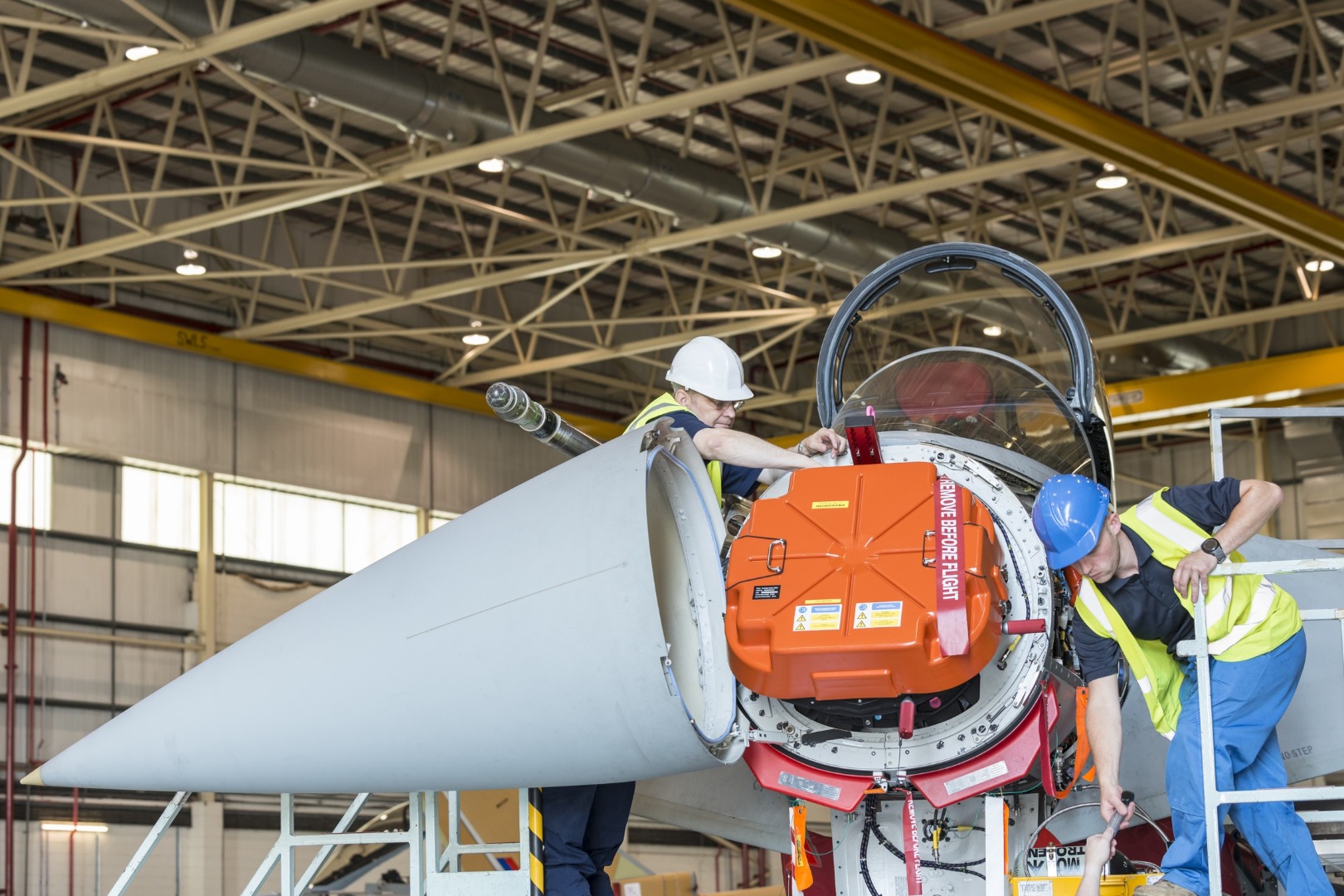Kuwait is one of the latest countries to join the elite club of Eurofighter Typhoon operators, having ordered a fleet of 28 aircraft, making the Kuwait Air Force one of the best-equipped internationally. But what makes Typhoon the world’s most powerful and reliable swing-role combat aircraft? There are many factors, from powerful engines to innovative airframe design, but one of the most important is Typhoon’s suite of battle-winning sensors and defensive systems. We take a look at three reasons Typhoon’s sensor capabilities will help the Kuwait Air Force to dominate the airborne engagements of the future.
Class-leading E-Scan radar. Kuwait will be the first nation to receive Typhoon equipped with its new ‘Captor-E’ E-scan radar system. Because of Typhoon’s large radome and its increased cooling and electrical power capacity, the platform can accommodate a radar array, which is larger and more powerful than other combat aircraft, and a repositioner, providing it with a game-changing wide field of regard. It’s all about being able to target opponents at the longest-possible range and the widest angle, providing a significant combat edge.
Digital stealth. Some aircraft rely on an airframe designed to make it hard for radars to see. However, threats are continuously evolving and an airframe is a difficult part of the aircraft to update. That’s why Typhoon’s ‘Praetorian’ defensive aids sub-system employs a range of electronic countermeasures that allows the aircraft to digitally hide its signature, or to generate radar noise to confuse enemy radar operators. These countermeasures, which together provide the platform with ‘digital stealth’, can be effectively adapted as threats change, keeping the Typhoon well protected into the future.
Thermal targeting. As well as a radar, the Eurofighter Typhoon carries the PIRATE Infra-red Search and Track (IRST) system, which can target and track opposing aircraft via their heat signatures. The key benefit of this high-tech sensor is its ‘passive’ nature, which means it doesn’t emit energy – great for when the Typhoon needs to remain extra covert. Following years of software enhancements, the PIRATE IRST is one of the most reliable and accurate thermal sensors on any combat aircraft.

The Eurofighter Typhoon is a team effort. It was designed, developed and is now produced by the aviation industries of four countries: Italy, Spain, Germany and the United Kingdom, coordinated by Eurofighter GmbH. In total, 623 aircraft have been ordered to date. Eurofighter Typhoon aircraft are in operational service with 7 air forces: Italy, Spain, Germany, the United Kingdom, Saudi Arabia, Oman and Austria. Kuwait and Qatar will soon receive their first aircraft.
As part of the European collaboration that led to the development of the programme, a series of consortia have been formed to deliver vital systems such as the engine and sensors. Leonardo leads consortia which draw on the best of European engineering expertise to deliver the Typhoon’s sensors and defensive capabilities. The EuroRADAR consortium brings together Leonardo, Hensoldt and Indra to provide the Captor-E radar. The EuroDASS consortium sees Leonardo, Elettronica, Indra and Hensoldt working in partnership to deliver the Praetorian DASS. Meanwhile EuroFIRST, which provides the PIRATE IRST, is a consortium which includes Leonardo, Thales and Tecnobit.

